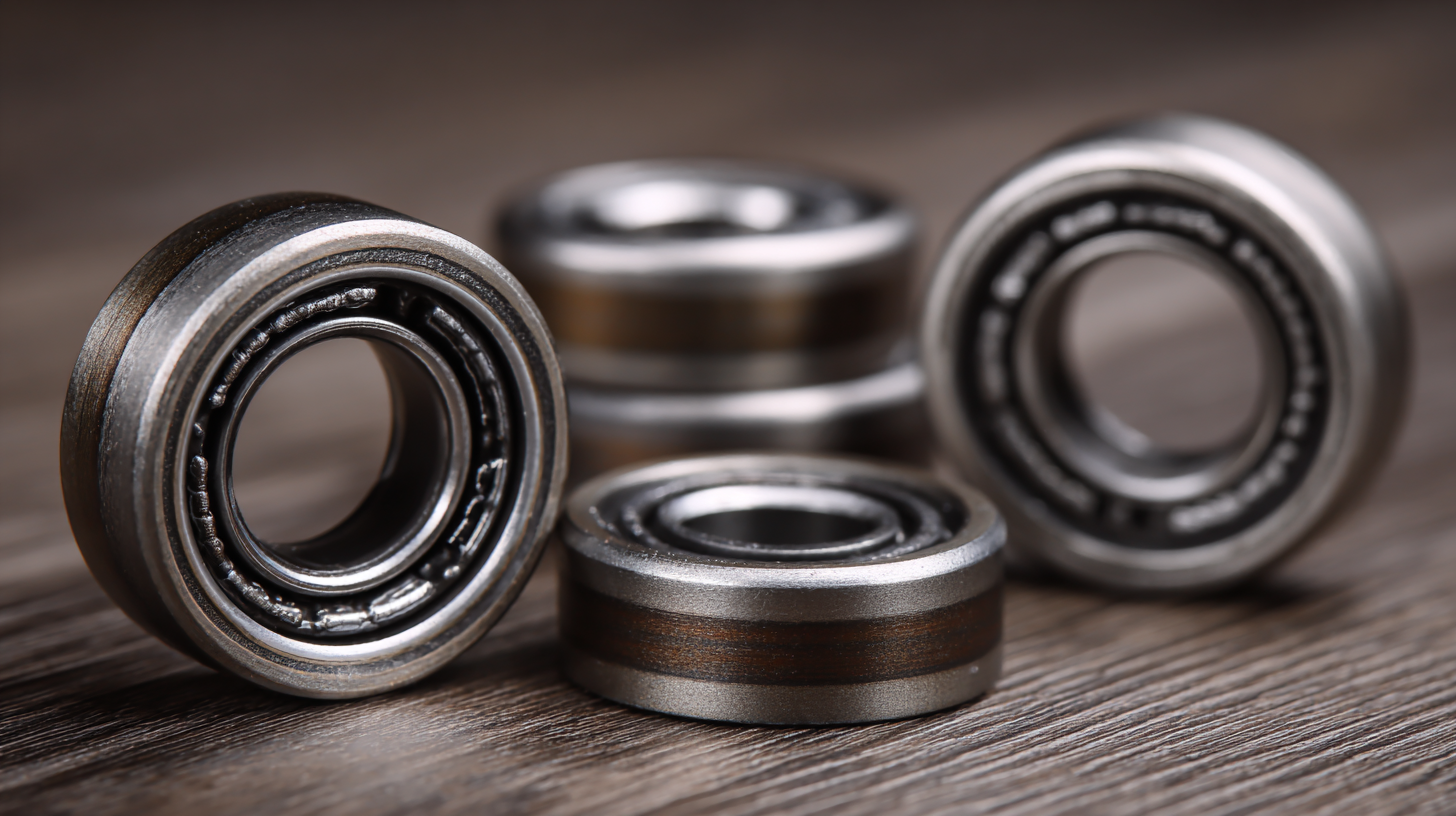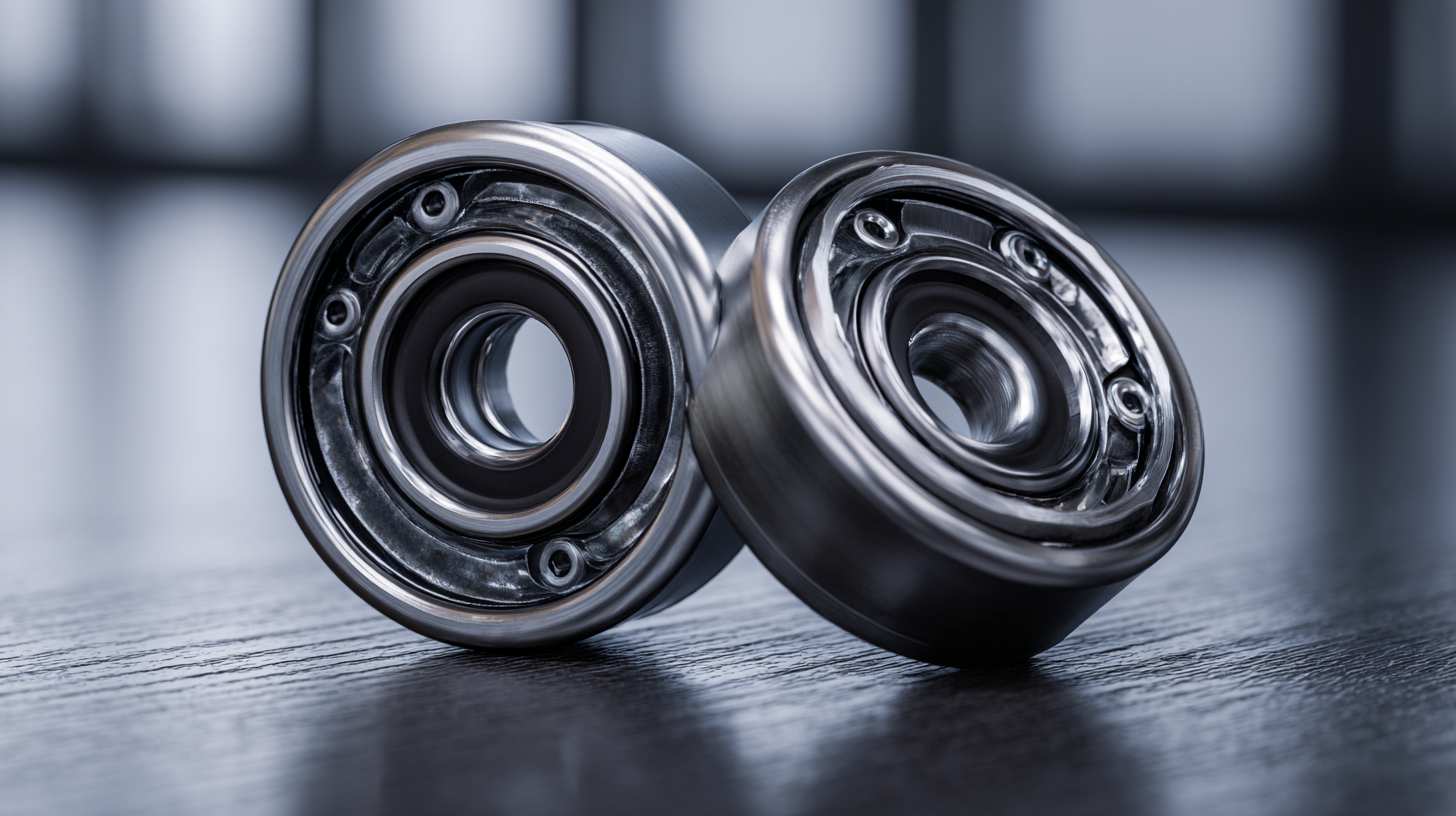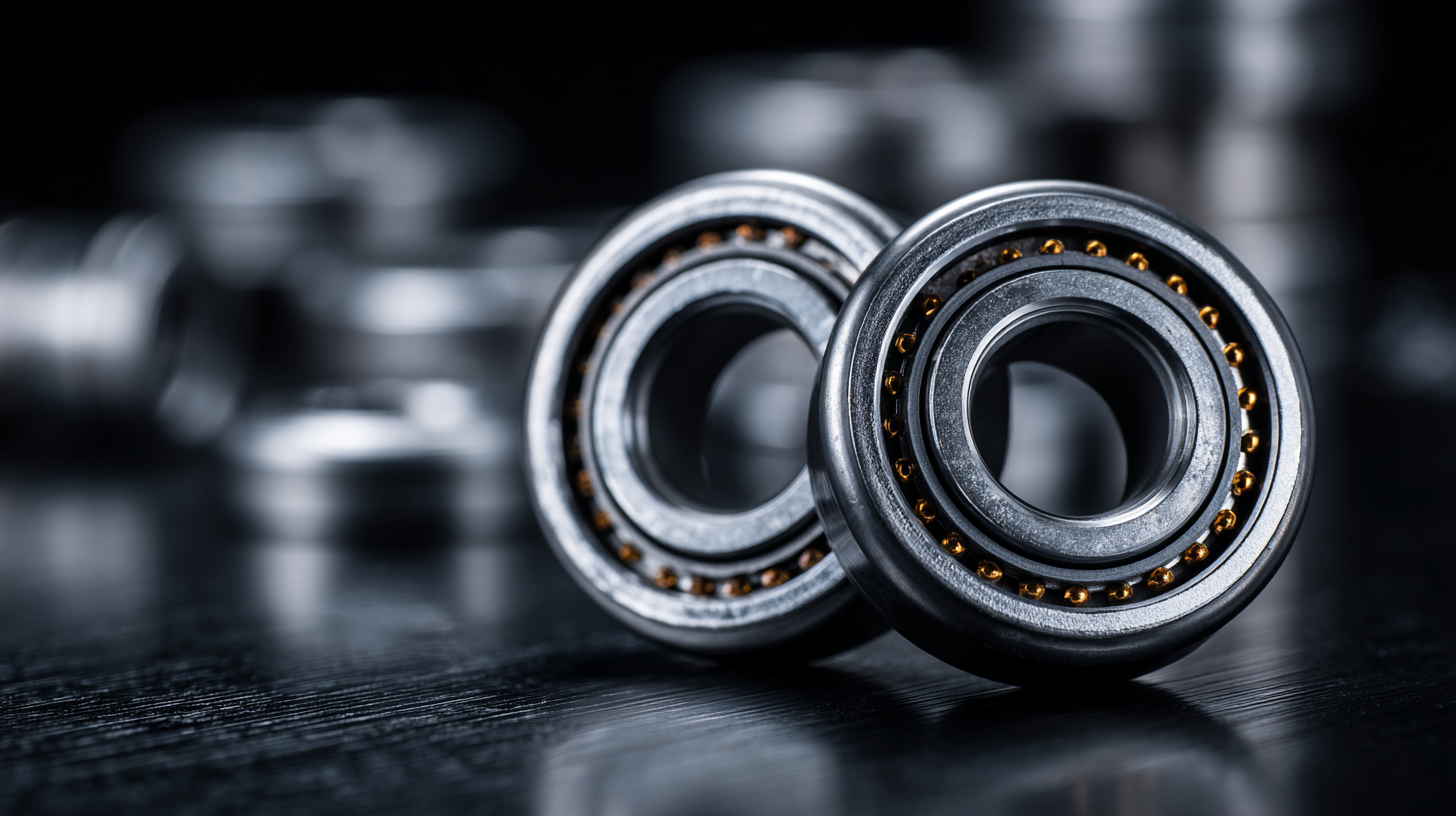Unlocking the Secrets of Best Radial Ball Bearings with In-Depth Technical Specifications and Usage Guide
 In the highly competitive landscape of industrial machinery, understanding the intricacies of Radial Ball Bearings is paramount for optimizing performance and reducing operational costs. According to a report by MarketsandMarkets, the global rolling bearings market is projected to reach $92.2 billion by 2026, with Radial Ball Bearings playing a crucial role due to their versatility and efficiency in various applications. The selection of high-quality Radial Ball Bearings not only enhances machine reliability but also significantly lowers maintenance expenses; studies show that an effective bearing selection can reduce maintenance costs by up to 25%. This blog aims to dive deep into the technical specifications and usage guidelines of Radial Ball Bearings, empowering professionals to make informed decisions that can lead to improved operational efficiency and reduced downtime.
In the highly competitive landscape of industrial machinery, understanding the intricacies of Radial Ball Bearings is paramount for optimizing performance and reducing operational costs. According to a report by MarketsandMarkets, the global rolling bearings market is projected to reach $92.2 billion by 2026, with Radial Ball Bearings playing a crucial role due to their versatility and efficiency in various applications. The selection of high-quality Radial Ball Bearings not only enhances machine reliability but also significantly lowers maintenance expenses; studies show that an effective bearing selection can reduce maintenance costs by up to 25%. This blog aims to dive deep into the technical specifications and usage guidelines of Radial Ball Bearings, empowering professionals to make informed decisions that can lead to improved operational efficiency and reduced downtime.
Understanding Radial Ball Bearings: Key Features and Benefits
 Radial ball bearings are essential components in various applications, offering a blend of durability and performance. These bearings primarily facilitate smooth rotary motion by supporting axial and radial loads, making them crucial in automotive, machinery, and consumer products. The key features of radial ball bearings include their ability to operate at high speeds, low friction, and maintenance ease, which significantly enhances the efficiency of mechanical systems.
Radial ball bearings are essential components in various applications, offering a blend of durability and performance. These bearings primarily facilitate smooth rotary motion by supporting axial and radial loads, making them crucial in automotive, machinery, and consumer products. The key features of radial ball bearings include their ability to operate at high speeds, low friction, and maintenance ease, which significantly enhances the efficiency of mechanical systems.
One of the most compelling benefits of using radial ball bearings is their versatility. They come in a range of sizes and materials, including stainless steel and polytetrafluoroethylene (PTFE), catering to diverse operational environments. PTFE, known for its low friction coefficient and excellent chemical resistance, is particularly noteworthy in applications where corrosion and lubrication challenges are present. As the global bearings market expands, projected to reach $97.10 billion by 2025, the demand for specialized bearings, including those optimized for food and beverage applications, underscores the importance of selecting the right radial ball bearings for specific needs.
Essential Technical Specifications for Optimal Performance
When it comes to selecting the best radial ball bearings, understanding the essential technical specifications is crucial for optimal performance. Key specifications such as load ratings, speed ratings, and material composition significantly influence the effectiveness and longevity of bearings. According to a report by the International Journal of Engineering Research, the dynamic load rating can affect bearing life exponentially; an increase of just 10% in load capacity can result in a lifespan increase of 50%. Therefore, selecting the right load rating according to operational conditions is fundamental.
Another important specification is the bearing's speed rating. Ball bearings must be able to sustain high rotational speeds without significant thermal degradation. Recent studies have indicated that ceramic ball bearings tend to outperform steel counterparts in high-speed applications due to their lower density and enhanced thermal stability.
Tips: Always consider the application environment when choosing materials; for corrosive or high-temperature environments, stainless steel or ceramic options may be more suitable. Additionally, you should keep an eye on lubricant types, as they can dramatically impact your bearing's performance and lifespan. Regular maintenance checks can prevent premature wear and ensure optimal functionality of your radial ball bearings throughout their lifecycle.
Comparative Analysis: Types of Radial Ball Bearings
When it comes to radial ball bearings, understanding the various types available can significantly impact performance in an application. The most common types include standard deep groove ball bearings, angular contact ball bearings, and self-aligning ball bearings. Each type serves unique purposes and presents different advantages, making it essential to choose the right fit based on specific operational requirements.
Standard deep groove ball bearings are versatile and widely used in various machinery due to their ability to handle both radial and axial loads. On the other hand, angular contact ball bearings are designed to accommodate higher axial loads and are ideal for applications that require precision, such as in motors and pumps. Self-aligning ball bearings, characterized by their ability to correct misalignments, are particularly useful in situations where shaft alignment may be an issue. By analyzing these types, engineers can make informed decisions and enhance reliability in their designs.
Comparison of Different Types of Radial Ball Bearings
This chart illustrates the load capacity of various types of radial ball bearings, showcasing how different designs cater to specific applications and requirements in industrial contexts.
Applications of Radial Ball Bearings Across Industries
Radial ball bearings play a pivotal role in numerous industries, serving as essential components in various machinery and equipment. Their design allows them to handle both radial and axial loads, making them versatile for applications ranging from automotive to aerospace. In the automotive sector, these bearings contribute to the smooth operation of engines, transmissions, and wheel assemblies. Similarly, in the aerospace industry, they are critical for aircraft engines and landing gear systems, where reliability and performance are paramount.
The rise of advanced materials and innovative designs in the bearings industry has further enhanced the performance of radial ball bearings. For instance, the development of hybrid deep groove ball bearings has led to improved durability and efficiency, especially in high-speed applications such as traction motors for rail systems. As the global bearings market continues to expand, reaching projected values over USD 97 billion, the demand for high-performance radial ball bearings is expected to increase. This trend not only highlights the significance of these components in various sectors but also underscores the need for ongoing innovation to meet the evolving challenges faced by modern industries.
Choosing the Right Radial Ball Bearing for Your Needs
When selecting the right radial ball bearing for your needs, it's essential to consider several key factors that can significantly influence performance and longevity. First and foremost, load capacity is crucial. Different applications require bearings that can withstand varied loads, whether they are radial, axial, or a combination of both. Be sure to check the dynamic and static load ratings, as these specifications will guide you towards bearings that fit your operational demands.
Another important consideration is the bearing's material and lubrication type. Bearings are typically made from materials like chrome steel, stainless steel, or ceramic, each offering unique advantages in terms of durability and resistance to corrosion. Additionally, the choice of lubrication—whether grease or oil—can affect the operational efficiency and heat resistance of the bearing. It's vital to assess your environmental conditions, as factors like moisture, temperature, and dust can impact the bearing's performance. By taking these specifications into account, you can confidently choose the most suitable radial ball bearing for your specific application.

Home
Products
Industrial Bearings
Deep Groove Ball Bearings
Self-Aligning Ball Bearings
Angular Contact Ball Bearings
Cylindrical Roller Bearings
Taper Roller Bearings
Spherical Roller Bearings
Bearing housing or Accessories
Miniature Bearing
Thrust ball bearing
Radial Spherical Plain Bearing
Pillow Block Bearing
Needle Roller Bearings
Automotive Bearings
Agricultural Bearings
Special Material Bearings
Industry Application
About Us
News
Contact Us



 In the highly competitive landscape of industrial machinery, understanding the intricacies of Radial Ball Bearings is paramount for optimizing performance and reducing operational costs. According to a report by
In the highly competitive landscape of industrial machinery, understanding the intricacies of Radial Ball Bearings is paramount for optimizing performance and reducing operational costs. According to a report by  Radial ball bearings are essential components in various applications, offering a blend of durability and performance. These bearings primarily facilitate smooth rotary motion by supporting
Radial ball bearings are essential components in various applications, offering a blend of durability and performance. These bearings primarily facilitate smooth rotary motion by supporting 